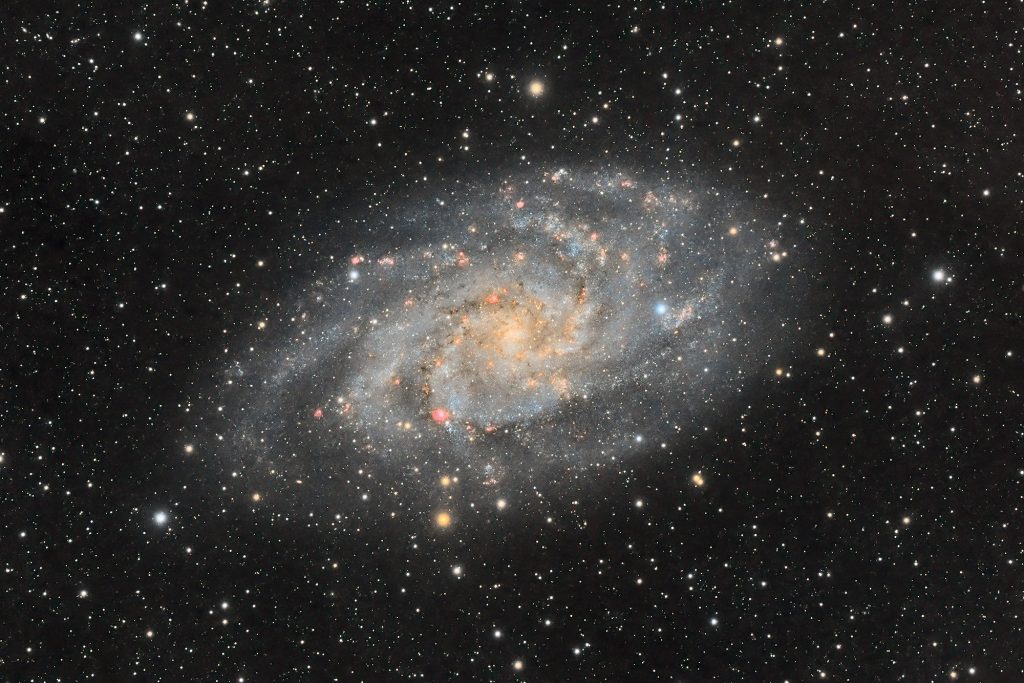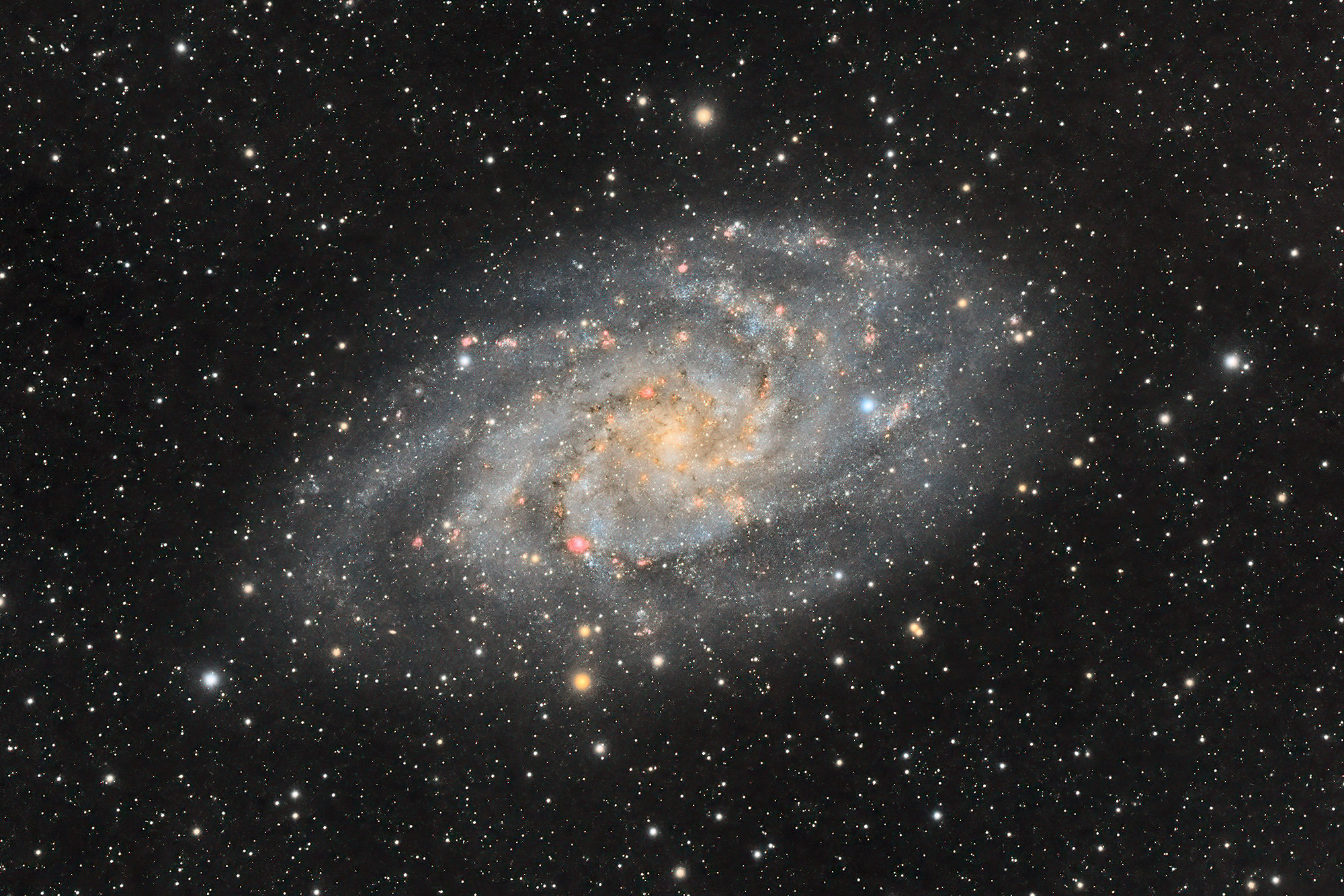Following on from my last post with the Andromeda Galaxy, here is another beautiful galaxy which is also part of a group of galaxies known as the Local Group. The Andromeda Galaxy and our own Milky Way are the two largest in the group and this one known as the Triangulum Galaxy is third.
Why the Triangulum Galaxy? This is simply because it can be found in the small constellation of Triangulum – the Triangle! Just about any group of three stars might do, but this particular triangle is found above Aries and below Andromeda.
Again, as with my M31 image, the Optolong L-Extreme filter was used to collect the H-Alpha data which was then blended into the red channel. This enhances the pinky-red regions on nebulosity in the spiral arms of the galaxy.
As usual, click on the image below to see the full-size version.

For the technically-minded, this article shows the equipment used to take this image.
I acquired the images using N.I.N.A. software. I took 72 x 300s exposures with the QHY268C camera for the RGB and 17 x 600s exposures using the L-Extreme dual-narrowband filter to get the Ha data which I combined with the red channel from the RGB. All processing with PixInsight.

About 54 globular clusters have been identified in this galaxy, but the actual number may be 122 or more. The confirmed clusters may be several billion years younger than globular clusters in the Milky Way, and cluster formation appears to have increased during the past 100 million years. This increase is correlated with an inflow of gas into the center of the galaxy. The ultraviolet emission of massive stars in this galaxy matches the level of similar stars in the Large Magellanic Cloud .
Comments are closed.